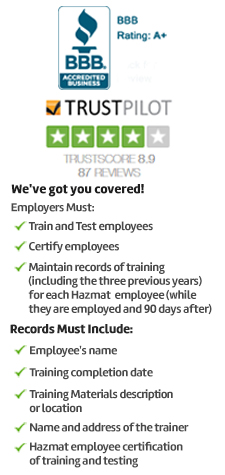
MSHA Surface Mining Confined Spaces

Workers at surface mines are compelled to work in confined spaces to carry out work, sometimes for days, facing a lot of risks and physical and emotional hazards. This course is formulated to focus on kinds of risks and health issues associated with working in confined spaces at surface mines and best practices, accident prevention procedures and safety standards to be followed. Though all miners can join this course, employers, transport operators, safety managers, supervisors, health inspectors can find it useful by this course.
Governing regulations
All surface mines should adhere to the safety standards as advocated by MSHA and OSHA. While MSHA enforces health and safety practices in mines, the Occupational Safety and Health Administration (OSHA) ensures that safety and health legislations are followed across all industries. MSHA and OSHA work together to provide scalable and sustainable health and safety environment for miners. Both OSHA and MSHA are monitored by the United Mine Workers of America (UMWA) Health and Safety (H&S) Department to avoid lapses in protecting minors from various health hazards and risks.
Following best work practices is the responsibility of every minor irrespective of position or hierarchy. Similarly, everyone has his or her own responsibility towards safer operations. Employers must ensure that the workplace becomes safety compliant, employees get best training facility and everyone follows MSHA and OSHA regulations. Supervisors must ensure that workers are aware of safety standards and practices and respect MSHA and OSHA safety regulations.
Mines to become MSHA compliant must have a training plan approved by MSHA and trained by competent safety professional. Mining operators can use this or any of our courses to become MSHA compliant.
Our experts will train you to write a training plan when you join our Part 46 Surface Mining Training Plan course, the best such course available in the mining industry.
Course Overview
The MSHA Surface Mining Confined Spaces Training course is conceptualized to provide awareness on health and safety hazards due to working in confined spaces at surface mine sites. Learners get to know various kinds of hazards, best known practices, safety standards and principles, accident prevention methods and training methodologies.
Who Must Take this Course?
Confined space can cause physical, mental and psychological hazards on workers and hence people involved in such occupations or those who manage them should join this course to get awareness on safety practices and compliant standards. Also, workers who wish to enhance experience and career in mining can join this course and get expert advice in safe working, preventive measures and management skills.
Course Format
Our Surface Mining Confined Spaces online training has been packaged with well-researched content, best graphical representations, audio presentations and hordes of self-test questions for better preparations for the final exam.
Once completed the course successfully, each candidate will get a hard copy of completion certificate along with a wallet card which can be printed.
Continuing education credits?
Every successful candidate will receive 0.2 CEUs (or 2 CMEs) for completing this course.
Topics Covered
- About This Course
- Course Objectives
- Introduction to the MSHA Surface Mining Confined Spaces Training Course
- Regulatory Agencies
- Record Keeping
- Accident Statistics
- Applicability
- Key Terms and Definitions
- Overview of Confined Spaces
- Types of Confined Spaces: Permit-Required Confined Space (PRCS)
- Types of Confined Spaces: Non-Permit-required Confined Space
- Entry Requirements and Responsibilities
- Confined Space Program Requirements
- Confined Space Permit
- Elements of a Confined Space Permit
- Pre-Entry Preparation
- Atmospheric Hazards
- Classification of Atmospheric Hazards
- Oxygen-Deficient Atmospheres
- Flammable Atmospheres
- Toxic Atmospheres
- Atmospheric Testing and Monitoring
- Physical Hazards
- Engulfment
- Equipment Hazards
- Electrical Hazards
- Temperature Extremes
- Noise
- Vibration
- Radiation
- Wet Surfaces
- Psychological Hazards
- Confined Space Hazard Control
- Engineering Controls
- Administrative Controls
- Personal Protective Equipment (PPE) Controls
- Emergency Response Plan
- Fire Safety
- Respiratory Equipment
- Isolating Hazardous Energy
- Purging
- Ventilation
- Summary
- Additional Resources
- Exam

 NEBOSH CERTIFICATE
NEBOSH CERTIFICATE NEBOSH DIPLOMA
NEBOSH DIPLOMA IOSH
IOSH SAFETY DIPLOMA
SAFETY DIPLOMA CPD UK
CPD UK ROSPA UK
ROSPA UK FOOD SAFETY
FOOD SAFETY 



